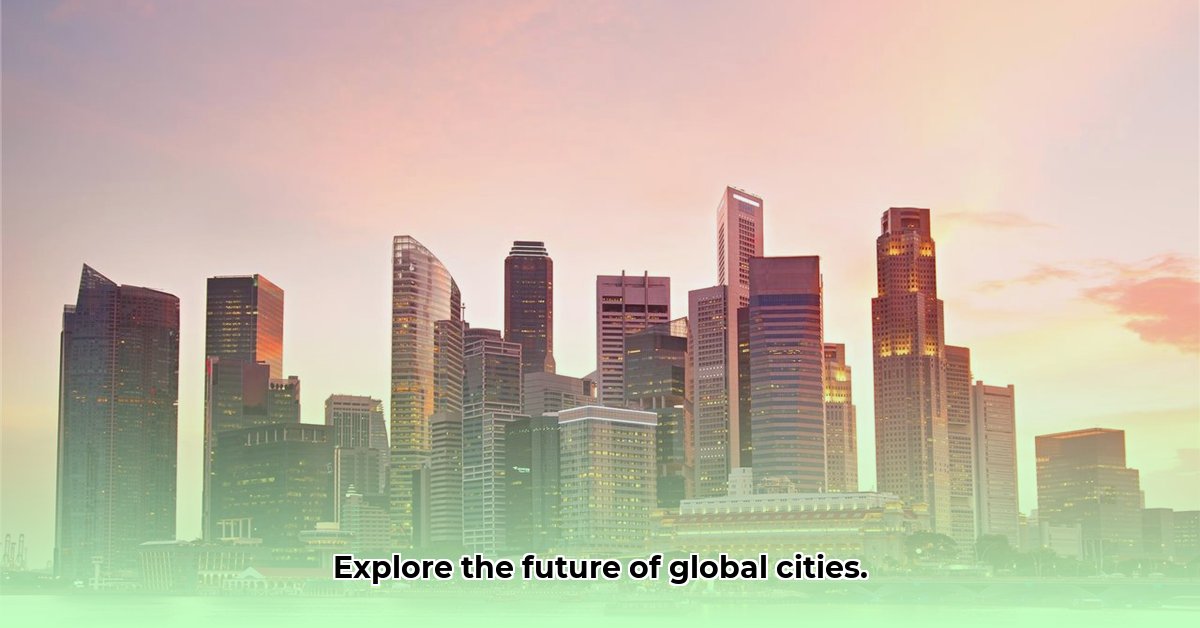Ever wondered what cities starting with “M” have in common, or how they differ? This article takes a closer look at major global cities – from sprawling megacities to compact European hubs. We’ll explore places like Mexico City and Mumbai, examining their shared challenges such as rapid population growth and infrastructure demands, and their unique approaches to urban development. We’ll then contrast them with cities like Madrid and Melbourne, highlighting their individual strengths and strategies, and even use Munich as an example of well-planned city life, exploring factors that contribute to thriving urban environments. The goal? To glean insights from these diverse cities, understanding what contributes to successful urban planning and growth – valuable information for urban planners, investors, and anyone curious about how urbanization shapes our world.
Global Urban Analysis: A Focus on Cities Starting With M
Embark on a fascinating journey exploring cities worldwide that begin with the letter “M.” We’ll uncover their unique personalities, and see how they tackle similar challenges in strikingly different ways. It’s a journey that reveals the incredible diversity of urban life and the nuances of urban development across the planet.
Megacities of Tomorrow: Contrasting Approaches
- Rapid urbanization strains infrastructure and resources.
- Unique cultural and historical contexts shape urban development.
- Sustainable solutions necessitate tailored approaches and innovative ideas.
We’ll begin with the giants – Mexico City and Mumbai. Both boast populations exceeding 20 million, making them massive urban centers facing similar hurdles. These challenges include the strain that rapid growth places on infrastructure – from crowded roads to water shortages – and the need for effective waste management. How do these urban behemoths provide public transportation to millions of people daily?
But their stories are distinct. Mexico City, a historical powerhouse where ancient Aztec structures stand alongside modern skyscrapers, grapples with a rich past while navigating the demands of a modern, ever-growing population. Air quality remains a significant concern, a consequence of rapid industrialization and heavy traffic. The city is actively working to implement sustainable transport solutions and green initiatives.
Contrast this with Mumbai, India’s bustling financial heart. Mumbai is a vibrant coastal metropolis thrumming with the energy of a rapidly developing economy and a major entertainment hub. Its iconic Gateway of India stands as a testament to its history, while the city pulses with modern ambition. While both cities grapple with managing their immense size, their approaches and unique challenges vary greatly. Solutions aren’t a simple copy-and-paste job. How do housing initiatives differ between these two megacities, and what impact do these differences have on residents’ lives and the city’s overall urban fabric?
European Innovation and Australian Charm: Distinct Urban Models
Let’s跨越海洋to Europe and Australia. Madrid, Spain’s captivating capital, offers a different rhythm of urban life characterized by elegant boulevards, grand plazas, and a generally slower pace when compared to other major world cities. The city inextricably weaves its history into daily life. Madrid’s challenges are distinct, including issues like unemployment and the rising cost of housing.
In stark contrast, Melbourne, Australia bursts with innovation and a forward-thinking spirit. This city is a global leader in various industries, with a significant focus on quality of life and sustainability. Melbourne is known for its vibrant arts scene, café culture, and its emphasis on walkability and green spaces; though affordability, especially housing, remains a significant issue. While both Madrid and Melbourne present different urban challenges, they share a common thread: finding a balance between embracing their history and building a sustainable future. Can the urban planning successes in Madrid and Melbourne be applied to other cities struggling with urban sprawl, and what adaptations are necessary to account for local contexts?
German Urban Planning: Efficiency and Quality of Life
Next, we come to Munich, Germany. Renowned for its meticulous urban planning and exceptionally high quality of life, Munich is often used as a benchmark for efficient city management. The city consistently ranks highly in quality-of-life surveys. Its well-planned infrastructure, sustainable practices, and focus on preserving green spaces create an enviable environment, attracting residents and businesses alike. However, even Munich faces significant challenges, notably, the consistently high cost of housing. This is a problem many rapidly growing cities face worldwide. What crucial sustainability lessons can be derived from Munich’s urban planning strategies, and how can these lessons be applied to cities with different geographic and economic profiles?
Diverse Economies: Shared Urban Challenges
The economies of our “M” cities are diverse. Take Maracaibo, Venezuela, for example. Its economy is heavily reliant on oil production, making it extremely sensitive to global energy prices and market shifts. This vulnerability shapes the city’s challenges and its outlook. Then there’s Makassar, Indonesia, whose economy has historically been tied to the spice trade. It’s a city with a rich cultural heritage, but it faces the typical urban concerns of sustainable development, particularly given its location in a region vulnerable to climate change impacts. Despite these economic differences, these cities share common urban stressors: the need to manage population growth and ensure sustainable development. What steps are Maracaibo and Makassar taking to diversify their economies and reduce their reliance on single industries, and what role can urban planning play in these diversification efforts?
A Comparative Analysis
Here’s a summary of key aspects of each city, presented in a table:
| City | Approximate Population | Geographic Location | Economic Strengths | Key Challenges |
|---|---|---|---|---|
| Mexico City | >20 Million | Central Mexico | Manufacturing, Services, Tourism | Infrastructure, Air Quality, Water Scarcity |
| Mumbai | >20 Million | Coastal India | Finance, Entertainment, Textiles, Commerce | Overcrowding, Infrastructure, Sanitation |
| Madrid | ~6.7 Million | Central Spain | Tourism, Services, Finance | Unemployment, Housing Costs, Aging Population |
| Melbourne | ~5.2 Million | Coastal Australia | Finance, Education, Tourism, Technology | Affordability, Housing Supply, Urban Sprawl |
| Munich | ~1.5 Million | Southern Germany | Automotive, Technology, Tourism, Manufacturing | Housing costs, Sustainability, Traffic Congestion |
| Maracaibo | ~2 Million | Northwestern Venezuela | Oil Production | Economic Volatility, Infrastructure, Political Instability |
| Makassar | ~1.5 Million | Sulawesi, Indonesia | Trade, Fisheries, Agriculture | Sustainable Development, Climate Change, Urban Poverty |
Charting a Course for Urban Futures
The “M” cities we’ve explored demonstrate the varied and complex nature of urban development. From sprawling megacities to more compact, planned communities, these cities strive towards sustainable futures. Understanding these individual paths is crucial for urban planners, investors, and anyone interested in the future of our urban landscapes. The future of cities requires a detailed understanding of these challenges and opportunities, fostering solutions tailored to each city’s specific context, while learning from the successes and failures of others. Collaboration and knowledge sharing between cities are essential for building resilient and thriving urban environments.
Comparing Urban Planning Strategies in Rapidly Growing vs. Established “M” Cities
Let’s explore the fascinating world of urban planning in cities beginning with “M,” examining how their strategies differ based on their growth trajectory. We’ll delve into how to compare these approaches, focusing on sustainable solutions, resilience, and innovative policies.
Key Takeaways:
- Rapidly growing “M” cities face infrastructure strain; finding solutions is key.
- Established “M” cities focus on revitalization and sustainability to maintain their cultural heritage.
- Effective urban planning balances growth with residents’ needs and environmental considerations.
- Analyzing cities requires understanding population density, economic drivers, geographical constraints, and existing infrastructure.
- Successful strategies involve collaboration between city planners, developers, investors, and residents.
Megacities in Motion: Mexico City and Mumbai
Mexico City and Mumbai exemplify the challenges of rapid urbanization. Both are megacities grappling with massive population growth, straining existing infrastructure. Comparing urban planning strategies in these cities involves analyzing their approaches to housing, transportation, and environmental sustainability. Mexico City’s efforts to expand public transit, including its Metrobus system, contrast with Mumbai’s reliance on a congested rail system and efforts to develop a metro network. What are the long-term environmental and social impacts of these differing transportation strategies? How do land use policies in these cities affect urban sprawl and access to affordable housing?
Mature Metropoles: Madrid and Melbourne Planning
Madrid and Melbourne, as established cities, present a different set of planning challenges. While Madrid faces issues of urban sprawl and economic inequality, its focus differs from that of rapidly growing cities. The need for urban renewal and revitalization takes center stage. Melbourne offers a compelling counterpoint. Known for its high quality of life and sustainability initiatives, Melbourne offers lessons in sustainable urban development and community engagement. Comparing urban planning strategies here involves focusing on revitalization projects, urban design principles, green building initiatives, and community engagement strategies. How can other cities replicate Madrid and Melbourne’s approaches to preserving green spaces while accommodating growth, and what are the limitations of these approaches in different contexts?
A European Perspective: Munich Efficiency
Munich serves as an example of efficient and sustainable urban planning. Its compact city design, excellent public transportation system, and focus on green spaces provide a benchmark for other cities. Comparing urban planning using Munich as a point of comparison reveals the potential of long-term planning and strategic investment. What specific policies contributed to Munich’s successful integration of green spaces into the urban landscape, and how can these policies be adapted for cities with different climates and economic structures
- Exotic Girl Names Reflecting Diverse Cultures And Unique Beauty - December 11, 2025
- Exotic Female Names Offer Cultural Richness and Unique Sounds - December 10, 2025
- Exotic Baby Girl Names Evoking Far-Off Lands and Beauty - December 9, 2025










